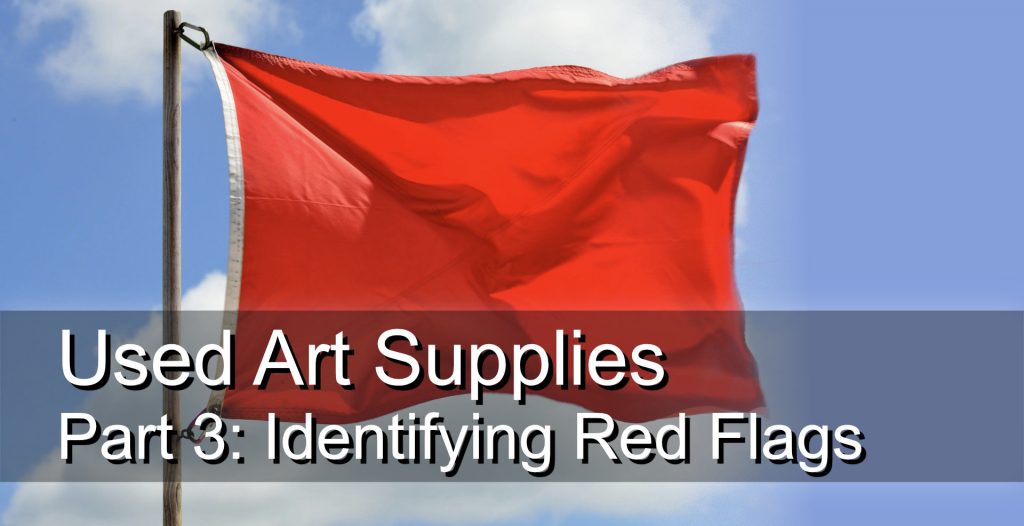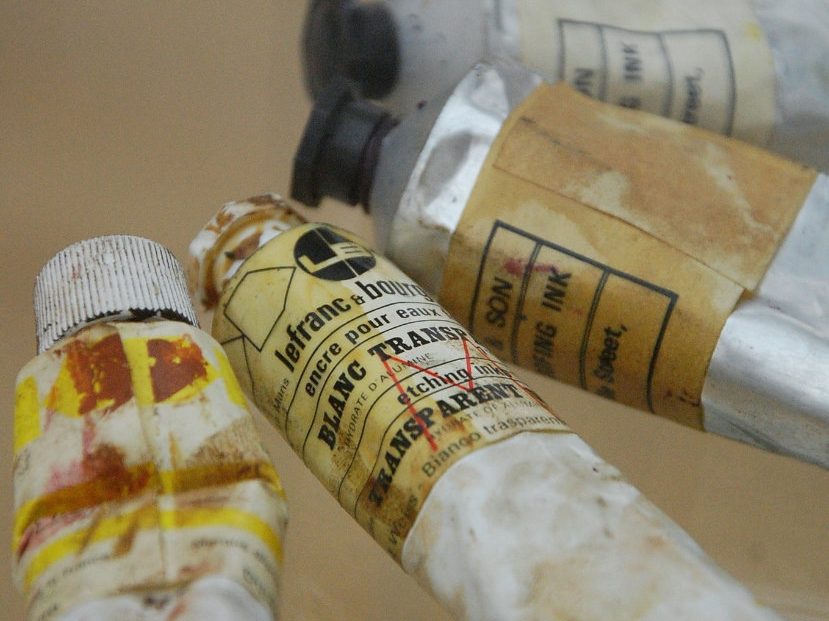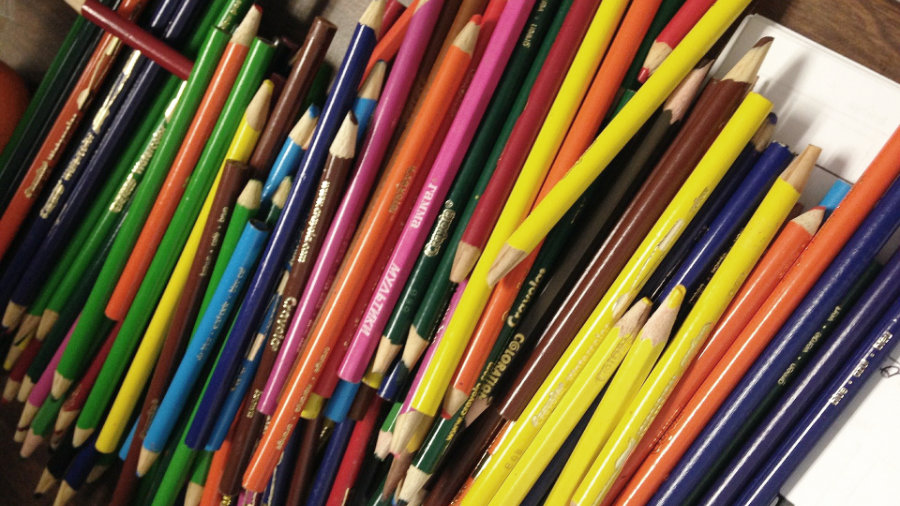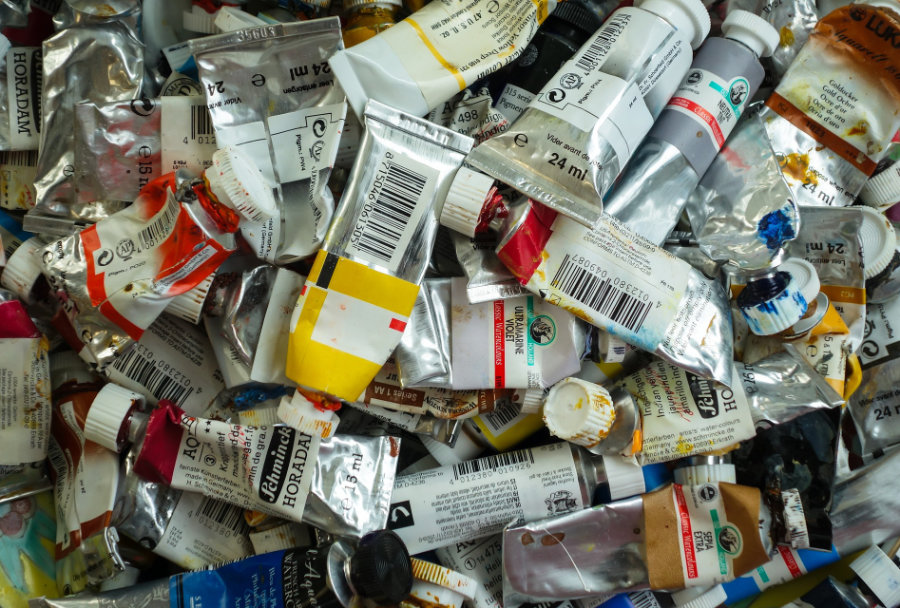
Finally we get to the part that’s probably the most important when shopping for used supplies – how to identify if the used art supplies you see online are actually a deal.
I am 100% behind saving money whenever you can to make the most amount of art within your budget. Purchasing used supplies is one way to do this. But remember that for every kind and honest artist, there’s someone who is willing to make misleading claims on their art supplies to take advantage of unsuspecting artists.
I’ve personally browsed hundreds (and in all likelihood possibly thousands) of listings across multiple websites in the past year. From my experience, I’ve categorized the main tactics I’ve seen suspicious sellers artificially inflate the value of their items. Keep in mind that most websites do have some buyer protections, so the wording sellers use are carefully crafted to make it sound like the products they have for sale are worth more than they ought to be.
Common Misleading Tactics Second-Hand Sellers use for Art Supplies
VINTAGE – means nothing!
Unless you are interested in displaying old supplies, do not fall for the marketing of “vintage,” “antique,” “discontinued,” or “rare” attached to art supplies. A graphite pencil that is 30 years old should not cost more than a graphite pencil you already own. If a supply was discontinued, it probably was for a good reason! Art manufacturers have reformulated and updated their products to be safer over the years. A “vintage” tube of paint may be less pigmented and more hazardous than what you can pick up at your local art store.

Bundles (aka “lots”) of mixed brands
A common practice some sellers use is to mix several different brands and sell them all together. Upon closer inspection of the product photos, the expensive brands will nearly always make up the minority of the supplies. For colored pencils, you’ll often find that Crayola (and similar student-grade brands) will be mixed with professional-grade Faber-Castell or Caran d’Ache pencils which are valued at 5-20x the price of Crayola.
Another common tactic is to mix different art grades together. Cheaper “student grade” supplies may look very similar to more expensive “artist grade” supplies. And in fact, many art manufacturers make different “series” of supplies at different prices for students on a budget and professional artists. Take a good look at the product photos to verify that the items match up with the seller’s listing description.

You should be able to verify both the quantity of items and the brands that the seller claims are included in the art supply ‘lot.’ If the photo shows a pile/bin/drawer of supplies, contact the seller and request additional photos where the supplies are laid out without items overlapping. If the seller refuses to accommodate your request, do not buy the items.
Label removal or covering/hiding the manufacturer
The outer label on a tube of paint or paper wrapper on a pastel stick/crayon contains important information about the color number, lightfastness, and manufacturer. When it comes to reordering, you’ll be stuck guessing which color you used unless you have a color chart for reference. In photos, you should be able to identify the brand and color of the item(s) for sale.
Pastel sticks specifically suffer from this packaging issue. Once the outer paper label is removed from a pastel stick, it is impossible to identify one brand from another.
Some painters decant their colors (transfer paint from tubes into smaller containers for travel). This is common for watercolor artists. I highly discourage purchasing paint that is not in its original tube. You’ll have no way to prove that the color the seller reports is what you actually may end up with.

Overzealous MSRP values
One tactic sellers will use is to advertise the price they allegedly “paid” for the supplies and advertise that the item for sale is at a severe discount. DO NOT rely solely on the seller telling you that you’re getting a good deal – do some research yourself! A quick google search will immediately report the MSRP (retail price) of an item.
And this goes without saying, but do not pay retail prices for used art supplies! If the price for used supplies is the same as MSRP, it makes no sense to purchase it used.
How to spot a deal
An obvious, but necessary, point I have to make is that if the deal sounds too good to be true, it just might be. Most artists who decided to sell their materials were the original owners who purchased the paint, brushes, pencils, easels. Since they are familiar with how much the materials cost, it’s generally understood that an opened or slightly used paint tube will not be the same as the retail price of a new tube.
Asking 50%-75% of the retail price for materials is fairly standard practice in the used art supply market. If the materials are barely used or in nearly new condition, the asking price may be a small percentage (15%-20%) off of the MSRP.
Narrowing down the brands you’re interested in trying allows you to focus your search. It’s a good idea to set up a spreadsheet of the average cost per unit or set so you’ll quickly be able to identify a good deal. In my spreadsheet I have information about the MSRP and the best price available NEW from art supply sites. A few key attributes that will be important for pricing are brand, size (ml.), and grade (artist or student). After all, if you don’t know the value of the supplies, how can you know that you’re saving money?
Now, just because the listing may fall under one or more of the four conditions above, doesn’t mean that the seller is “sketchy” or lying. But if a listing falls under several of the categories, ABSOLUTELY ask for additional information and clarification from the seller before making an offer. A responsible and active seller will often reply to messages in 1-2 days. If you get “ghosted” or hear no response back, it’s time to move on.
On very rare occasions, you might find a “golden goose” where the seller is looking to quickly liquidate supplies and will price their items severely under the MSRP. In my time browsing websites, I’ve only come across these deals a handful of times. Often you won’t be the only one who discovers a great deal once it’s publicly available. However if you’ve done your homework and you can confidently evaluate that the used supplies are what the seller claims, you have the ability to make an offer – and hopefully snatch that deal before anyone else!
Part 4 will be include tips on how to identify the condition of used art materials. If you’re not already subscribed to my email list, consider signing up for monthly emails and updates!
Want to learn more about buying used art supplies? Read on!
Have a tip I didn’t mention here? Share your experience purchasing used supplies below.
-Lauren
5 thoughts on “Used Art Supplies | Part 3: Identifying Red Flags and Discovering Gems”